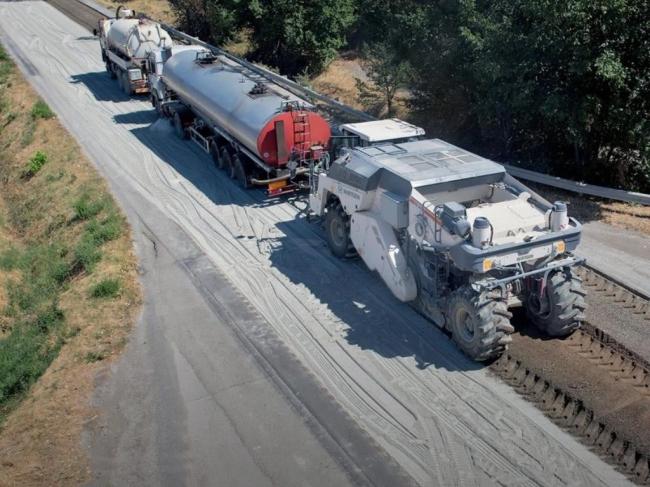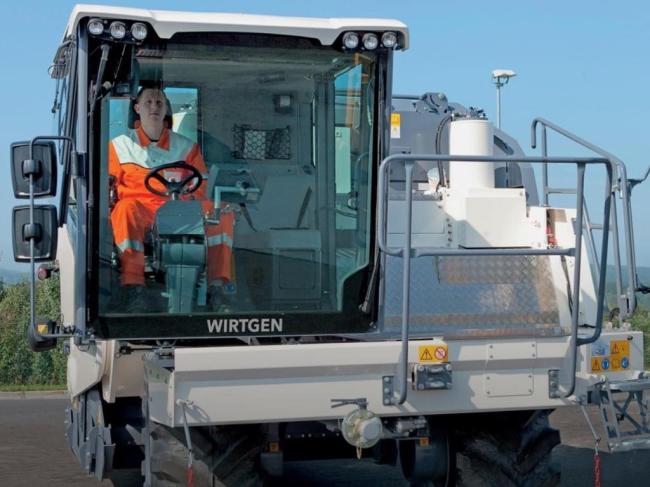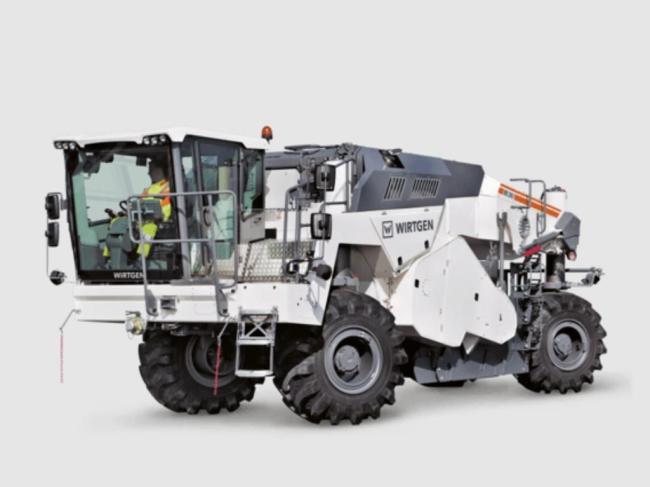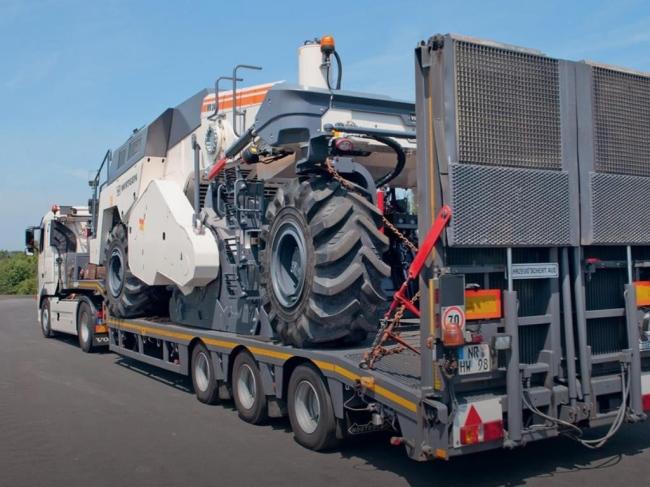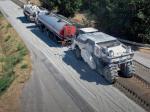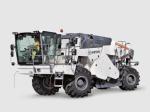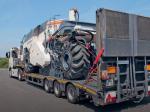WIRTGEN WR240i – COLD RECYCLERS AND SOIL STABILIZERS
Cold recyclers are used to prepare asphalt pavement on site. In this process, the existing pavement is granulated with the milling and mixing rotor and prepared by adding precise amounts of bituminous binding agents, cement and water. The result is a homogeneous material that can be used to directly repave the surface. Soil stabilizers use the milling and mixing rotor to mix pre-spread binding agents such as lime or cement into the existing, less stable soil and transform it into a high-quality material directly on site.
The recyclers have a variable mixing chamber and microprocessor-controlled injection systems for the addition of bitumen emulsion, water and foamed bitumen. In the soil stabilization process, the all-wheel drive, all-terrain machines mix binding agents into existing soils, producing load-bearing soils with ideal properties for further roadworks. In the cold recycling process, the existing pavement is milled off and the milled material is then homogeneously mixed with the added binding agents. The new mix of materials then serves as a basis for base courses.
THE COMPACT RECYCLER WITH A DIVERSE APPLICATION RANGE
• Compact recycler of the WR series with an increased working width, specifically for the US market.
• With a working width of 7 ft. 10 in. (2.40 m) and a maximum working depth of 19.7 in. (500 mm), it is suitable for a diversity of operations in soil stabilizing and cold recycling.
• The intuitive operating concept provides optimum comfort for an efficient work process and high productivity levels.
• When it comes to soil stabilizing, the ideal performance range is between 10,000 and 50,000 ft² a day (1,000 and 5,000 m²/day).
• For cold recycling, the ideal performance range is between 8,000 ft² per hour (800 m²/h) and 3.9 to 5.9 in. (10 to 15 cm) of asphalt thickness.
SOIL STABILIZATION WITH WR MODEL SERIES
Soil stabilization outperforms soil replacement thanks to few truck trips, shorter construction times, conserved resources, and lower CO2 emissions. The WR soil stabilizer uses its powerful milling and mixing rotor to mix pre-spread binding agents such as lime or cement into existing soil with insufficient bearing capacity, transforming it into a high-grade building material right on the spot. The resulting homogeneous mixture of soil and binding agent offers excellent tensile, compressive, and shear strength, long-term resistance to water and frost, and volume stability.
COLD RECYCLING WITH WR MODEL SERIES
The WR is equipped with a powerful milling and mixing rotor as well as state-of-the-act injection systems. The cold recycler uses the milling and mixing rotor to mill asphalt pavements, granulates them, sprays binder and water in precisely measured doses, and mixes it all together in a single operation. The new base layers produced on site then stand out thanks to their exceptional bearing capacity.
MIXING PROCEDURES
Cold recycling can either be carried out in-plant by transporting the material recovered from an existing road to a central warehouse and passing it through a mixing plant, or in place- in situ using a cold recycler. In the in-place/in-situ mixing process, a cold recycler granulates the existing pavement and homogeneously mixes in the binding agent and water. In the in-plant mixing process, RAP and crushed rock are transported to a mixing plant near the construction site.
Similar models may be shown in addition to the featured model. Equipment may be shown with options.
Specifications are subject to change without prior notice.


